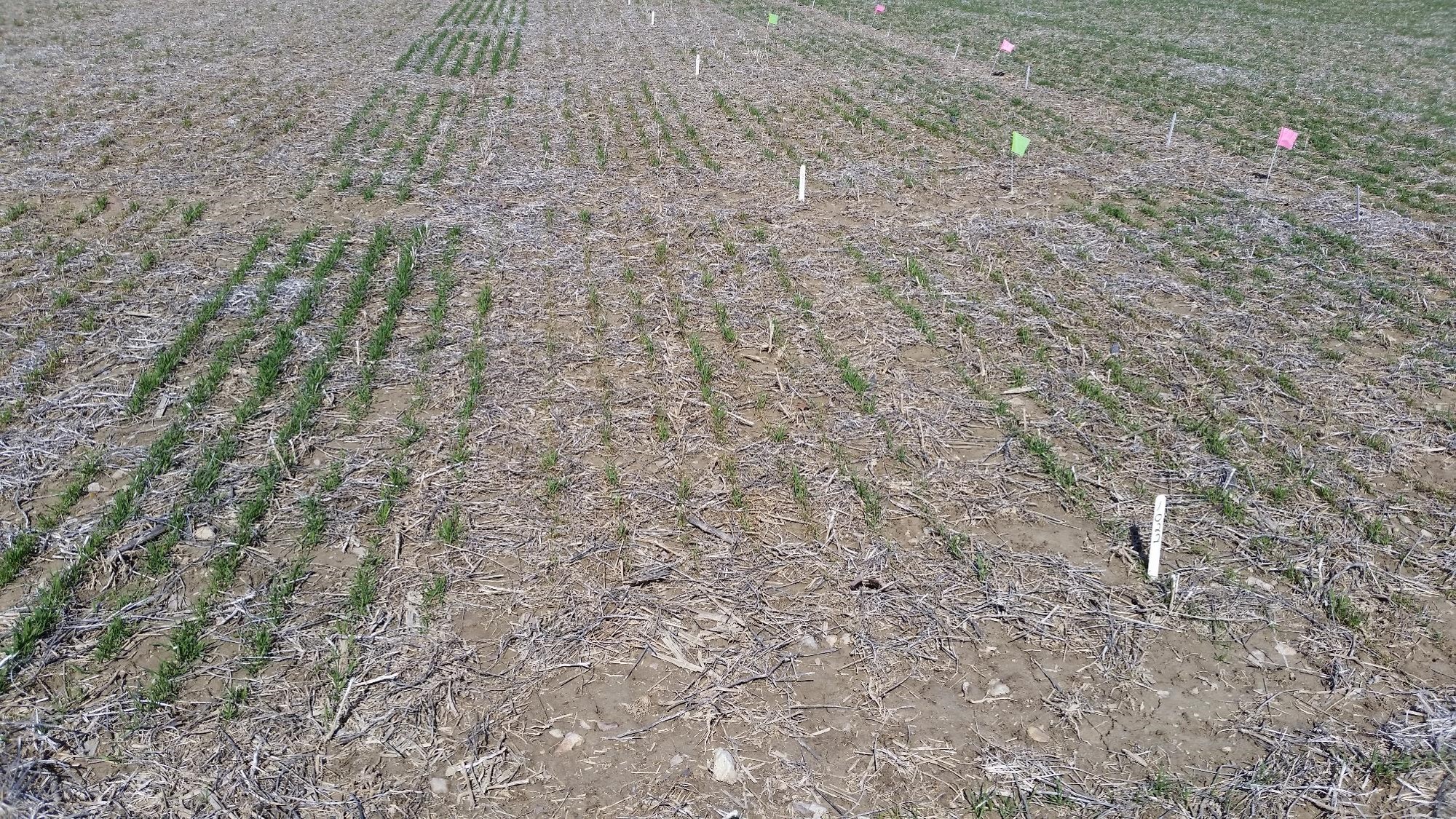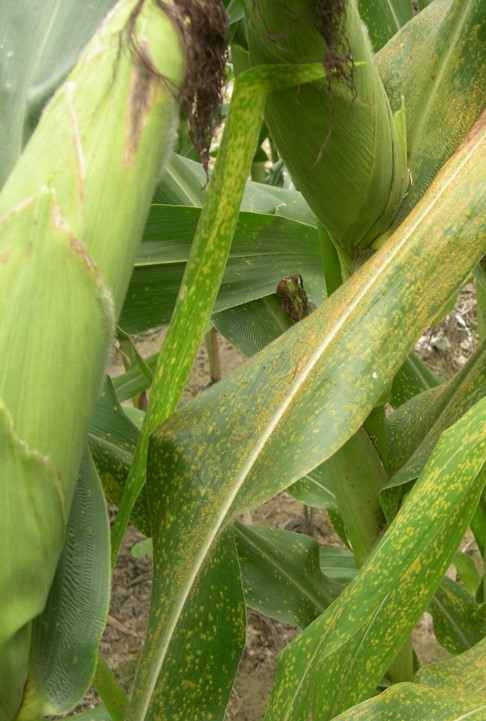To date, we have tested 371 H. zea in adult vial tests, with a mean survival rate of 31.9% in the treated vials (5 micrograms cypermethrin). Please see the attached Figure for more details: AVT_6_Aug
Category Archives: Pest Group
Brown marmorated stink bug distribution update for August 6, 2015
Our scouts found a BMSB nymph in Franklin County soybean this past week. Populations in soybean remain low; please also see the black light trap report. Here is the map of all 3 counties where BMSB have been detected in soybean in 2015: BMSB_map_6_Aug
Kudzu bug distribution update for August 6, 2015
Kudzu bug has been found in soybean in 30 Virginia counties. Most populations were low (zero to 2 adults per 15 sweeps), although a field in Pittsylvania at R2 growth stage had an average of 13 kudzu bugs per sample. Please see the data table for recent samples (kb_data_6_Aug) and the state distribution map (KB_map_6_Aug) for more details.
TriCor Receives Registration for use in Wheat and Barley
The herbicide TriCor, a metribuzin product from United Phosphorus Inc., has received 24(c) registration (special local needs) for use in Virginia for control of Harmony and Harmony Extra (group 2 herbicides) resistant common chickweed. The supplemental label is here: TriCor DF Herbicide 24(c) VA label. This is good news for small grains growers.
Research by Drs. Scott Hagood and Michael Flessner indicate that TriCor at 2 oz/a results in excellent common chickweed control when applied in fall or spring, with no significant injury to wheat. However, wheat injury can be a concern. Using crop oil concentrate or vegetable oil surfactants with TriCor increases the risk of crop injury, as well as when applying with fertilizer in combination with TriCor. Growers should select wheat and barley varieties that are tolerant of metribuzin if planning on using TriCor as certain varieties are more sensitive to metribuzin than others. Seed dealers may have information regarding metribuzin tolerance. Additionally, preliminary nonreplicated wheat variety sensitivity research by Drs. Wade Thomason, Carl Griffey, and Michael Flessner is included in this publication: https://pubs.ext.vt.edu/CSES/CSES-129/CSES-129-PDF.pdf. See pages 99 to 101.
Always make sure to read and follow the product label. Also note that TriCor is the only stand-alone metribuzin product legal for this use.
Annual Corn Earworm Field Corn Survey–2015
Annually, we conduct a survey to estimate Helicoverpa zea (corn earworm) infestation levels in field corn in mid- to late July. Corn is considered a nursery crop for corn earworm, allowing the pest to complete a lifecycle and then move on to other crops such as soybean, cotton, and peanut in August. Over 30 years of data show that there is a linear correlation between the infestation level in corn and the amount of soybean acreage that gets treated with insecticide for this pest.
To conduct the survey this year, the number of corn earworm larvae found in 50 ears of corn was recorded in 5 corn fields in each of 25 counties, totaling 6,250 ears and 125 fields sampled. When fields were known to contain Bt or non-Bt corn, this was noted. Otherwise, samples were considered to be random and assumed to be representative of the actual Bt/non-Bt composition in each county. Age of corn earworms, or if they had already exited the ears, was also recorded (data not shown). We greatly appreciate the help of Virginia Cooperative Extension Agriculture and Natural Resource (ANR) Agents, Virginia Tech faculty and staff, summer agricultural assistants, and interns in this effort. These cooperators are acknowledged in the attached Figure. We also would like to thank the many growers who graciously allowed us to inspect their fields for corn earworm larvae.
Results of the survey are provided in the Figure (CEW_survey_2015). Statewide, approximately 17.5% of ears were infested with corn earworm. This is even lower than the numbers reported in 2014 (20%) and 2013 (18%)—both years with very few cotton, peanut or soybean fields being infested with treatable numbers of worms. Regional averages for 2015 were 4% infested ears in the Northern Neck, 13.4% in Mid-Eastern, 9.5% in South-Central, and 27.7% in the Southeast.
So far, all indicators point to another year with few fields reaching thresholds. We will continue monitoring and posting updates.
This survey is intended to be a representative sample, not a complete picture. We always recommend scouting individual fields to determine exactly what is happening in terms of corn earworm as well as other pests and crop problems. Also, please check the black light trap reports on the Virginia Ag Pest and Crop Advisory and other reports posted weekly to keep up-to-date on the insect pest situation.
Black light trap catches for the week ending July 30, 2015
Corn earworm moth captures ranged from zero to 2.3 per night in area black light traps; brown marmorated stink bug nightly averages ranged from zero to 1.3. Please see the attached data tables for more details. Thanks to the following for their reports this week: Mary Beahm, Keith Balderson, David Moore, Scott Reiter, Austin Brown, Mike Parrish, and Ames Herbert’s entomology crew. Special thanks to those hosting the black light trap locations! BLT_30_Jul_2015
Corn disease update — July 28, 2015
In an update to my previous post, southern corn rust has now been confirmed in Chesapeake, VA. This is a few days earlier than in 2014 (August 3), but most of the field corn in the region is mature enough (dent stage) that yield should not be impacted. Late planted corn in fields with good yield potential (120 bu/ac +) may need to be protected with a foliar fungicide. Strobilurins are good preventative fungicides whereas triazoles are recommended once sporulation is observed in a field due to their curative activity. A combination fungicide is a good option as long as a strobilurin fungicide has not been applied previously. Wet, warm weather favors disease development. Once sporulation occurs, symptoms of rust are relatively obvious. Lesions start out as raised, blister-like pustules then break open to reveal orange spores. Samples of corn plants with symptoms of southern rust can be submitted to the disease clinic at the Virginia Tech Tidewater AREC (contact Dr. Hillary Mehl, hlmehl@vt.edu).
Corn disease update – July 26, 2015
Much of the field corn in the region is near or at the dent stage and no longer at risk for yield loss from foliar diseases. One disease I frequently receive questions about is southern corn rust. Southern corn rust is a potentially aggressive disease, but the fungus does not overwinter in Virginia and it is typically seen late in the growing season if at all. In 2014, southern corn rust was confirmed in Virginia on August 3, which is relatively early compared to other years. As of this week, southern corn rust has been confirmed from four North Carolina counties (Hyde, Lenior, Beaufort, and Camden) but it has not been observed in Virginia. We very well may see southern corn rust in southeastern Virginia within the next couple of weeks, but there is no need to panic. Yield of corn at or near the dent stage is unlikely to be impacted by the disease, but late planted corn in fields with good yield potential (120 bu/ac +) may need to be protected with a foliar fungicide. Strobilurins are good preventative fungicides whereas triazoles are recommended once sporulation is observed in a field due to their curative activity. A combination fungicide is a good option as long as a strobilurin fungicide has not been applied previously. Wet, warm weather favors disease development. Once sporulation occurs, symptoms of rust are relatively obvious. Lesions start out as raised, blister-like pustules then break open to reveal orange spores. Samples of corn plants with symptoms of southern rust can be submitted to the disease clinic at the Virginia Tech Tidewater AREC (contact Dr. Hillary Mehl, hlmehl@vt.edu).
July 23, 2015 update for brown marmorated stink bug and kudzu bug survey of soybean
In soybean, our scouts have detected BMSB in Bedford, and kudzu bug in Brunswick, Campbell, Cumberland, Dinwiddie, Greensville, Nottoway, Prince Edward, Suffolk, and Surry. Kudzu bug has been observed on other hosts (i.e., kudzu) in Appomattox, Buckingham, Isle of Wight, and Southampton. Please see the attached maps for further details. BMSB_KB_23_Jul_2015
Black light trap captures for the week ending July 23, 2015
Corn earworm moth captures were low this week, ranging from zero to 0.7 per night. BMSB catches ranged from zero to 2 per night. Please see the attached file for the data tables. Thanks to the following for their reports this week: Mary Beahm (Warsaw), Scott Reiter (Prince George), David Moore and intern Taylor Sabo (Middlesex), Austin Brown (Southampton), and Dr. Herbert and the entomology crew in Suffolk. BLT_23_Jul_2015


